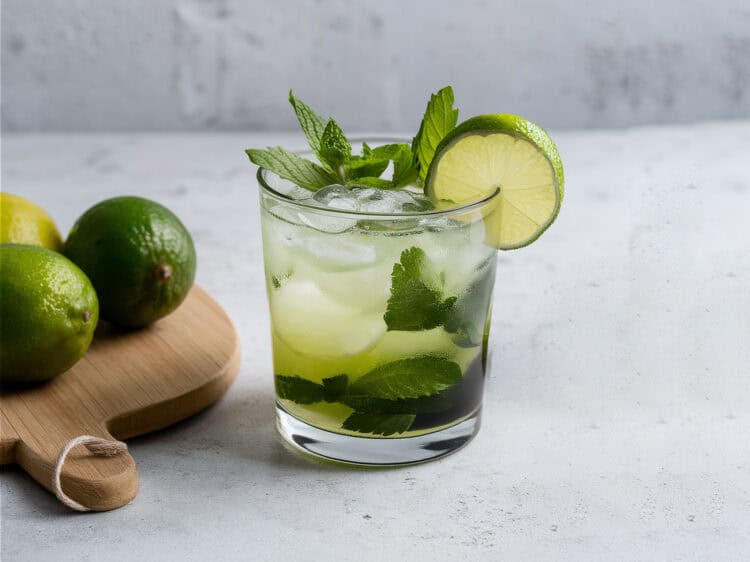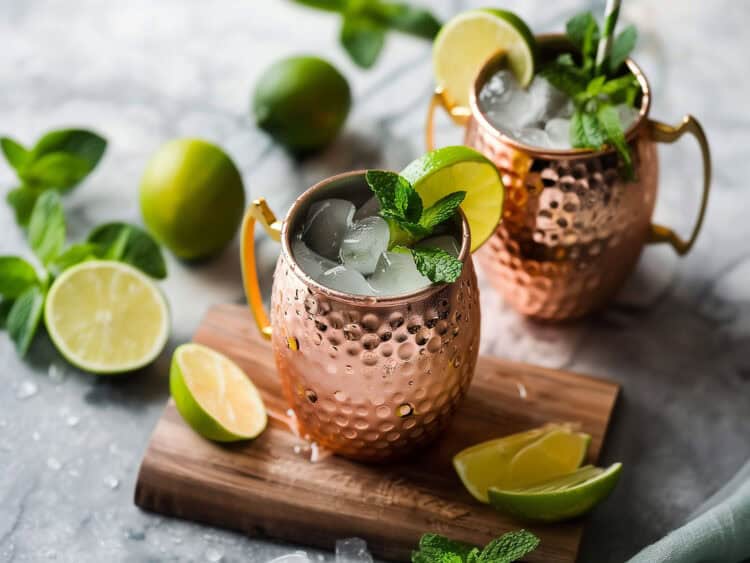Guide to the Different Types of Gin
Have you ever wondered about the different types of gin that cocktail recipes sometimes refer to? Gin has been around for ages, so brewers have developed many versions of it.

What is Gin?
Gin is a distilled alcoholic beverage characterized by its distinct flavor profile and infusion of botanicals, most notably juniper berries. It’s typically made by redistilling neutral spirits with various botanicals, including juniper, coriander, citrus peels, and other herbs and spices.
What that means is that gin is an infusion. You take a neutral spirit and infuse it with some fruit and spices, and that’s how you get gin.
The flavor of gin can vary depending on what you put in it. This gives it a wide range of taste profiles, from the classic dry and piney notes of London Dry Gin to the sweeter and more complex flavors of flavored gins.
Gin is a versatile spirit that can be enjoyed on its own, over ice, or as a base for a variety of cocktails, making it a beloved choice for gin enthusiasts and mixologists alike.
The History of Gin
The origins of gin can be traced back to the Netherlands, where it was initially developed as a medicinal tonic in the 1600s. The Dutch were already familiar with the distillation process and the use of juniper berries for their alleged healing properties.
The term “gin” itself is derived from the Dutch word “jenever,” which means juniper. Dutch physician Franciscus Sylvius is often credited with creating the first juniper-infused spirit as a treatment for various ailments, including kidney and stomach disorders.
Gin’s popularity spread to England when English soldiers fighting alongside Dutch troops in the Thirty Years’ War discovered the spirit. They brought it back to their homeland, where it quickly gained popularity as a spirit.
During the 20th century, gin experienced a decline in popularity due to the rise of other spirits, such as vodka and whiskey. However, in recent years, gin has seen a remarkable resurgence.
Craft distilleries and small-batch gin producers have emerged, offering a wide range of unique and artisanal gins with distinct flavor profiles.
Today, gin is enjoyed worldwide and has become a staple in bars and households alike. Its versatility and botanical complexity make it a favorite choice for cocktails, such as the classic Martini, Negroni, and Gin and Tonic.
The history of gin is a testament to its enduring appeal and its ability to adapt and evolve with the changing tastes and preferences of consumers throughout the centuries.
London Dry Gin
London Dry Gin is the most well-known and widely consumed type of gin. Despite its name, it can be produced anywhere in the world.
It’s called “dry” because it doesn’t have as sweet a taste as some other types of gin. It’s made from a base of grain, like wheat or barley.
The grain is fermented to make alcohol. Then, it’s distilled with botanicals, including seeds, berries, roots, and especially juniper berries.
Juniper berries give gin its special pine-like flavor. After distillation, nothing else is added. It’s clean, crisp, and aromatic, making it a favorite for many cocktails.
Plymouth Gin
Plymouth Gin is a type of gin that hails from the city of Plymouth in England. It has a rich history dating back to the 18th century and is known for its smooth and slightly sweeter taste compared to London Dry Gin.
It is made using a unique blend of botanicals, including juniper, coriander, angelica root, and cardamom. It tastes sweeter because of the botanicals used to make it.
Plymouth Gin is often enjoyed neat or in classic cocktails such as the Martini.
Old Tom Gin
Old Tom Gin is a traditional style of gin that was popular in the 18th and 19th centuries. It’s characterized by its slightly sweeter and more rounded flavor profile compared to London Dry Gin.
Old Tom Gin gets its name from the wooden “Old Tom” plaques that were placed outside bars during the era to indicate the availability of gin. It is often used in classic cocktails such as the Tom Collins and the Martinez.
Navy Strength Gin
Navy Strength Gin is a robust and high-proof gin that was traditionally produced for the British Royal Navy. It had to be strong enough to withstand the gunpowder test, which involved testing the gin’s flammability by mixing it with gunpowder and igniting it.
Navy Strength Gin typically has an alcohol content of around 57-58% ABV. It offers a bold and intense flavor profile, making it a favorite among gin enthusiasts and mixologists.
New Western Dry Gin
New Western Dry Gin is a modern interpretation of gin that deviates from the traditional juniper-forward flavor profile. While juniper is still present, New Western Dry Gins are known for their emphasis on other botanical flavors, such as citrus, floral, and herbal notes.
This style of gin offers a wider range of flavors and is often enjoyed by those seeking a more contemporary gin experience.
Genever (Dutch Gin)
Genever, also known as Dutch Gin, is a traditional style of gin that originated in the Netherlands. It predates the more well-known London Dry Gin and has a distinct malted grain flavor profile.
Genever is made by distilling a base spirit from malted barley, similar to whiskey production. It is often enjoyed neat or in classic cocktails such as the Holland House and the Martinez.
Barrel-Aged Gin
Barrel-Aged Gin is a unique style of gin that is aged in wooden barrels, similar to whiskey. The aging process imparts additional flavors and complexity to the gin, resulting in a smoother and more rounded taste.
It often includes notes of vanilla, oak, and spice. It can be enjoyed neat or used in cocktails that benefit from the richness and depth of flavors that the aging process brings.
Sloe Gin and Flavored Gin
Note: neither sloe gin nor flavored gin can be used in place of other types of gin without seriously changing the flavor profile. These are not interchangeable with other gins.
Sloe Gin is a fruit-infused gin that is made by macerating sloe berries (a type of wild plum) in gin along with sugar. It has a rich, sweet, and slightly tart flavor profile.
It’s often enjoyed on its own or used as an ingredient in cocktails such as the Sloe Gin Fizz and the Bramble.
Flavored Gin refers to any gin that has been infused or flavored with additional botanicals, fruits, or herbs. This category of gin offers a wide array of flavors, ranging from citrus and floral to spicy and herbal.
Like flavored vodkas, these gins are a great option for those looking to experiment with different taste profiles and add a unique twist to their gin cocktails.
Last Updated:












